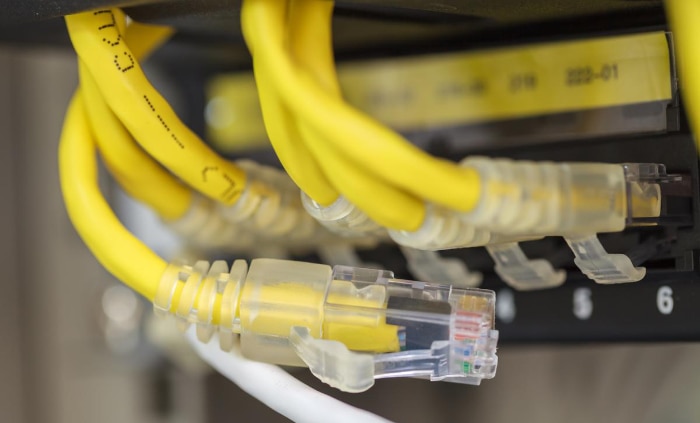What Does Server Unreachable Mean? Cracking the Code

As we immerse ourselves in the digital realm, unexpected roadblocks like error messages can often disrupt our seamless experience. One message that many users grapple with is the “Server Unreachable” notification.
Although it appears straightforward, this message can arise from various underlying causes.
‘Server Unreachable' Explained
When a user tries to connect to a server, be it for browsing a website, accessing a database, or utilizing a service, everything operates smoothly when the connection establishes seamlessly. However, every so often, users might encounter the disheartening message of “Server Unreachable.”
While this sounds definitive, the reasons behind it can vary. Let's break down what this error message means, its common causes, and its implications.
Understanding the Error Message
The “Server Unreachable” error is a communication problem between the client device (usually your computer or smartphone) and the targeted server. Simply put, your device made an attempt to reach the server but didn’t get a response back.
Think of it like trying to call a friend; if they don't pick up the phone, you can't communicate. Similarly, if a server doesn't respond, the digital “call” remains unconnected.
Common Reasons Behind the Message
- Network Issues Network problems can range from local interruptions, such as Wi-Fi signal drops, to broader issues like Internet Service Provider (ISP) outages. If there's a break in this chain, reaching the server can become a challenge.
- Server Downtime Just like any other machine, servers need maintenance. Sometimes they're taken offline intentionally for updates or repairs. At other times, they might crash unexpectedly. In either scenario, they become unreachable.
- Firewall Restrictions Both client devices and servers use firewalls for security. If a firewall misidentifies a connection attempt as malicious, it will block it, leading to our infamous error message.
- Overloaded Servers Popular websites or online platforms can sometimes receive more traffic than they can handle. When servers are overloaded with too many requests, they might stop responding.
- DNS Issues The Domain Name System (DNS) is like the phonebook of the internet, translating domain names into IP addresses. If there's an issue here, your device might struggle to find the server's “phone number.”
Implications of ‘Server Unreachable'
While the immediate implication of this error is the inability to access desired content or services, it can also serve as an alert. For users, it might mean checking their local connections or trying later.
For business owners or service providers, frequent occurrences can highlight bigger issues that need troubleshooting. Regular users might just move on to other platforms if they consistently face such problems, translating to lost opportunities for businesses.
Through a deeper understanding of “Server Unreachable” and its causes, users and businesses alike can be better prepared to address and prevent future occurrences. Knowledge, after all, equips us to create more efficient and smoother digital experiences.
Common Reasons for ‘Server Unreachable'
The digital world is not without its hiccups. Among the myriad of error messages a user might encounter, “Server Unreachable” stands out as one that can cause a fair bit of frustration.
While the message itself is simple, the underlying causes can be multifaceted. Let's examine the most common reasons leading to this digital roadblock.
Understanding Network Issues
Network connectivity serves as the foundation for any online activity. From minor disruptions, such as a momentary drop in your Wi-Fi signal, to more significant disturbances like an outage from your Internet Service Provider, any interruption in this chain can lead to the server becoming unreachable.
The Reality of Server Downtime
Servers, much like other machinery, have their off days. They might be taken offline for routine maintenance or updates.
Alternatively, they could crash due to unforeseen glitches. Regardless of the reason, if a server is offline, it's momentarily out of the digital race, leading to the ‘Server Unreachable' message.
Navigating Firewall Restrictions
Security stands paramount in the digital realm. Firewalls are essential components that safeguard both individual devices and servers.
However, at times, a firewall might misinterpret and block a harmless connection attempt as a potential threat. This misidentification results in the server being unreachable, even though everything else might be functioning perfectly.
Overwhelmed Servers
Imagine a small shop swamped with customers during a sale. Similarly, when websites or online platforms see a sudden surge in traffic, servers can become overwhelmed.
If they're bombarded with more requests than they can manage, they might temporarily stop responding.
DNS Dilemmas
Domain Name System, or DNS for short, acts as the bridge between domain names and IP addresses. Think of it as a sophisticated directory that points your device in the right direction.
However, if there's a hiccup in this directory – maybe a mislisting or an error – your device could end up lost, unable to find the server's digital address.
By understanding these reasons, both casual users and tech enthusiasts can better diagnose the issue when faced with the ‘Server Unreachable' message. The goal is always a smooth and uninterrupted online journey, and knowledge is the first step towards that.
How to Troubleshoot ‘Server Unreachable'

Encountering the ‘Server Unreachable' message can be a momentary setback in our digital journeys. But fear not, as this isn't a dead end.
With a few systematic troubleshooting steps, you can often pinpoint the cause and find a solution. Let's walk through some of the most effective methods to tackle this issue.
Assess Your Internet Connection
The first port of call when faced with such an error is to check your local connection. Ensure that your Wi-Fi or wired connection is active and stable.
Sometimes, simply restarting your router or modem can re-establish a lost connection.
Test Other Websites or Services
By trying to access a different website or service, you can determine whether the issue lies with a specific server or if it's a broader problem on your end. If multiple sites are unreachable, the problem likely lies with your connection or device.
Clear Browser Cache and Cookies
Over time, your browser accumulates data, some of which might lead to connectivity issues. Clearing the cache and cookies can often give you a fresh start, resolving minor glitches that could cause connection problems.
Diagnostic Tools at Your Disposal
Tools like ‘ping' and ‘traceroute' can offer insights into where the connection might be breaking down. A successful ping to a server means the server is reachable, but perhaps another issue is at play.
Conversely, if the ping fails, the server might be down. Traceroute, on the other hand, shows the path your connection takes to reach the server, highlighting any potential blockages along the way.
DNS Alternatives
If you suspect the issue lies with the Domain Name System, consider switching to an alternative DNS, like Google's Public DNS or Cloudflare. Sometimes, the default DNS provided by your ISP might be experiencing issues, and switching can resolve them.
Firewall and Antivirus Checks
Occasionally, overzealous security software might mistakenly block legitimate server requests. Review your firewall and antivirus settings to ensure they aren't the culprits behind the server being unreachable.
Seek Outage Reports
There are websites dedicated to tracking service outages for popular platforms. By checking these sites, you can determine if the server in question is experiencing widespread issues or if the problem is localized to your connection.
Armed with these troubleshooting steps, you'll be better prepared to tackle the ‘Server Unreachable' challenge head-on. Remember, in the vast digital landscape, there's almost always a path forward.
All it takes is a bit of detective work.
Prevention and Mitigation Strategies (For Server Owners)
Owning and operating a server is much like managing a dynamic, ever-evolving ecosystem. As the heart of many online operations, ensuring that servers run smoothly is crucial.
However, the ‘Server Unreachable' message can sometimes disrupt this harmony. Fortunately, with proactive measures and smart strategies, server owners can minimize these disruptions.
Let's discuss some of the best practices for prevention and mitigation.
Regular Server Maintenance and Monitoring
Routine check-ups can preempt many issues before they escalate. By regularly monitoring server health, performance, and traffic, owners can identify potential problems and address them early.
Utilizing tools that provide real-time analytics and server health metrics can be invaluable in this process.
Failover Strategies
One of the best ways to ensure server availability is to have backup systems in place. A failover system can automatically redirect traffic to a secondary server if the primary one becomes unavailable.
This ensures continuity of service and provides server owners with the time needed to address issues without inconveniencing users.
Load Balancing Solutions
High traffic can overwhelm a server, leading to slowdowns or even crashes. Implementing a load balancer can distribute incoming traffic across multiple servers, ensuring that no single server bears the brunt of sudden traffic spikes.
Robust Security Practices
Security breaches, DDoS attacks, or malware can take a server offline. By employing robust security measures, including firewalls, intrusion detection systems, and regular security audits, server owners can protect their infrastructure from malicious threats.
DNS Redundancy
Ensuring that the Domain Name System remains functional is crucial for server accessibility. By setting up DNS redundancy, server owners can make sure there's a backup in place if the primary DNS faces issues.
Regular Backups and Disaster Recovery Planning
Data loss can be catastrophic. Regular backups ensure that data can be restored quickly in the event of failures or breaches.
Additionally, having a clear disaster recovery plan means that when things go awry, there's a clear roadmap to restore operations.
Open Communication Channels
Transparency can go a long way. If there's scheduled maintenance or known issues, informing users in advance can help set expectations and reduce frustrations. Using status pages or sending out notifications can keep users in the loop.
For server owners, the aim is always to provide a seamless and uninterrupted service. By taking these proactive measures, they can ensure not only the uptime of their servers but also foster trust and reliability among their user base.
After all, a well-maintained server is the cornerstone of a thriving digital ecosystem.
Real-world Examples

The digital landscape is replete with instances where challenges have presented opportunities for growth, lessons, and innovation. By examining real-world examples, we can glean insights into the complexities and dynamics of the online world.
From server outages to spectacular recoveries, these stories offer valuable lessons.
The Amazon Web Services (AWS) Outage
In 2017, AWS, a major cloud service provider, experienced a significant outage affecting many of its services. The ripple effect of this was palpable, as countless websites and applications relying on AWS were impacted.
The cause? An unintended command executed during a routine debugging. This event underscored the importance of meticulous oversight and the vulnerabilities inherent even in tech giants' systems.
The Pokémon GO Phenomenon
When Pokémon GO was launched in 2016, it quickly became a sensation. However, the unexpected surge in user traffic led to frequent server outages and connection issues.
Developers had to scramble to increase server capacity and stabilize the game. This example highlights the necessity of scalable infrastructure, especially when launching products with potential mass appeal.
Dyn's DDoS Attack
In 2016, major websites like Twitter, Netflix, and Reddit were momentarily knocked offline. The reason? A massive Distributed Denial of Service (DDoS) attack targeted at Dyn, a DNS provider.
The scale and sophistication of this attack spotlighted the evolving threats in the digital domain and the need for robust cybersecurity measures.
Slack's Growth Challenges
As one of the most popular team collaboration tools, Slack has faced its share of server issues. Especially during its rapid growth phases, the platform experienced occasional outages.
These disruptions emphasized the importance of infrastructure preparedness in tandem with growth strategies.
Each of these real-world examples offers insights into the vulnerabilities, challenges, and imperatives of maintaining a seamless digital presence. While challenges are inevitable, proactive strategies, informed by past experiences, can ensure more robust and resilient systems in the future.
Conclusion
Drawing from these real-world examples, it becomes evident that even the most robust digital infrastructures can face challenges. Yet, with proactive measures, vigilance, and continuous learning from past incidents, organizations can bolster their defenses and be better prepared.
These stories not only underscore the complexities of the digital realm but also emphasize the importance of adaptability and resilience in our interconnected world.


